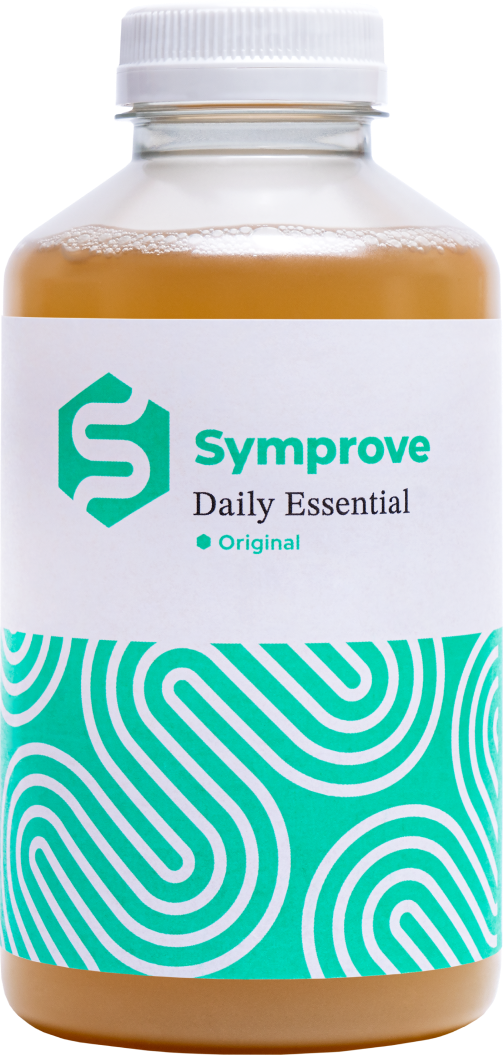The collection of microbes in the gut (known as the gut microbiome) plays an important part in the maintenance of children’s health and well-being. Many factors influence the developing gut microbiome, including birth mode (i.e. vaginal vs. caesarean section), feeding (i.e. breast fed vs. formula fed), use of antibiotics, as well as exposure to pets and siblings.
While the general consensus is that a child’s gut microbiome will stabilize around the age of three years old and reflect that of an adult’s gut microbiome, it has been suggested that that the development of the gut microbiome may continue into puberty or even later (Deering et al 2019).
The gut brain axis and neurodevelopment
The gut microbiome is thought to regulate diverse neurodevelopment processes through three main overlapping pathways - the endocrine pathway, the immune pathway, and the neuronal pathway (Wang et al 2023).
For example, the gut microbiome regulates brain development via synthesis of neurotransmitters and neuromodulators such as gamma-aminobutyric acid (GABA), dopamine, and noradrenaline. Serotonin, of which the majority is produced in the gastrointestinal tract, is crucial for brain development and a decrease is said to impair synaptogenesis and the development of connections within the brain, causing long term neurodevelopmental impairment (Saeed 2022).
It has been suggested that an imbalanced gut microbiome, also known as dysbiosis, can lead to an alteration of microbe-derived metabolites and drive neuroinflammation. In fact, the gut microbiome is considered a key driver in the pathophysiology of neurodevelopmental disorders such as Down’s syndrome (DS), autism spectrum disorder (ASD), attention deficient hyperactivity disorder (ADHD) and Rett syndrome (Silva et al 2020).
Notably, some children with neurodevelopmental disorders do not appear to feel pain in the same way as their peers. It has been suggested that the gut microbiome may also contribute to central perception of pain via modulating receptor expression (Defeye et al 2019).
Down’s syndrome and the gut microbiome
Gut microbial dysbiosis is often reported in individuals with DS. In fact, it is associated with cognitive impairment through alteration of specialist cells in the central nervous system known as microglia (Ren et al 2022).
A recent study by Cai et al (2023) observed significantly different gut microbiome diversity in individuals with DS compared with non-DS volunteers, including a higher abundance of Prevotella, Escherichia/Shigella, Catenibacterium, and Allisonella. These bacterial groups were positively correlated with levels of pro-inflammatory cytokines. Furthermore, the Firmicutes/Bacteroidetes ratio was significantly elevated in individuals with DS. These observations are consistent with clinical evidence suggesting that gut microbiome alterations in DS influences cognitive function by shifting the status of the microglia (Grigor’eva, et al 2020, Cai et al 2023).
Gastrointestinal symptoms in Down’s syndrome
Gastrointestinal symptoms have been well documented in neurodevelopmental disorders. It’s plausible that an altered gut microbiome drives increased gut permeability and translocation of microbes and their metabolites, triggering inflammatory processes and influencing neurodevelopment during early childhood in susceptible children by way of the gut-brain axis.
Gastrointestinal problems affect up to 77% of children with DS with constipation being the most commonest problem (Moore 2018). It has been postulated that the gut microbiome may play a direct or indirect role in the pathogenesis of functional constipation by influencing peristalsis (Kwiatkowska 2021). Slow gut transit, resulting from low abdominal muscle tone, often contributes towards the development of functional constipation in children with DS. If alterations in the gut microbiome affects peristalsis, then it could also be a contributing factor in the development of constipation and in part, explain why standard therapy with a stool softener alone often fails to resolve it.
At present, the treatment of constipation often requires a multifactorial approach including optimising fluid intake, adjusting diet alongside appropriate laxative treatment. Other adjunctive therapies include ensuring correct sitting position on a potty or toilet, encouraging exercises, including abdominal massage and ‘cycling’ legs in infants and pre-mobile toddlers.
The potential role of probiotics
Alterations in the gut microbiome opens the opportunity for the introduction of different gut microbiome targeted treatment modalities, such as probiotics.
At present, there are no studies investigating the influence of probiotics in DS. However, an increasing number of studies have discussed the potential role of probiotics in the management gastrointestinal and behavioural symptoms in other neurodevelopmental disorders (Bull-Larsen 2019, Caputi 2024).
Probiotics have several mechanisms of action, including gut microbiome and immune modulation, inhibiting growth or displacing pathogenic microbes, maintenance of the gut-barrier and production of metabolites such as lactate and short chain fatty acids (SCFAs) which could improve colonic peristalsis and decrease gut transit time (Gomes & Moras 2019). SCFAs have been shown to affect gastrointestinal motility in animal models (Soret et al 2010).
The role of probiotics in children with neurodevelopmental disorders has been well documented. Parracho et al. (2010) reported significantly fewer “hard” and more “formed” stools in children with ASD treated with probiotic therapy compared with placebo. Additionally, West et al (2013) reported a 50% decrease in constipation and diarrhoea severity in children with ASD after probiotic therapy.
Another study tested a combination of L. acidophilus, L. rhamnosus, and B. longum in children with ASD and found improvements in gastrointestinal symptoms (e.g. constipation, flatulence, and abdominal pain), as well as autism severity, including communication, sociability and sensory awareness (Shaaban 2018). Kaluzna-Czaplinska (2012) also found an improvement in the ability of children to concentrate and carry out instructions.
Furthermore, Santocchi et al (2020) reported an improvement in behaviour including adaptive functioning, developmental pathways, multisensory processing, as well as gastrointestinal symptoms in children with ASD following probiotic supplementation. Previous research in mice models by Siemann (2017) reported that difficulties in multisensory processing may be related to the serotonin system – levels of which are modulated by the gut microbiome. Santocchi hypothesized that probiotics could ameliorate sensory difficulties and gastrointestinal symptoms due to restoration of the serotonin system.
Summary
There is now compelling evidence regarding the crucial role of the gut microbiome in neurodevelopmental disorders. Research to date suggests that gut microbes are involved with shaping neural development, modulating neurotransmission and affecting behaviour, thereby contributing to the pathogenesis and/or progression of many neurodevelopmental disorders.
For children with neurodevelopmental disorders with associated gastrointestinal and behavioural issues, gut microbiome targeted therapies hold promise as an adjunct alongside medical therapy.
Indeed, probiotics opens opportunities to ameliorate both gastrointestinal symptoms and improve any associated behavioural issues.
References
- Adak A, et al. Cell Mol Life Sci 2019;76: 473-93.
- Akbari E, et al. Front Aging Neurosci 2016;8:256.
- Bokulich NA, et al. Sci Transl Med 2016;8(343):343ra82.
- Bonaz B, et al. Front Neurosci 2018;12:49.
- Bull-Larsen S, et al. Nutrients 2019;11:2805.
- Cai S, et al. Front Microbiol 2023:14:1016872.
- Caputi V, et al. Front Neurosci 2024;18:1341656.
- Casertano M, et al. Food Res Int 2021;152:110892.
- Cavanaugh G, et al. Cureus 2024;16(1):e53305.
- Deering KE, et al. Nutrients 2019;12(1):16.
- Defaye M, et al. J Neural Transm 2019;127(4):445-65.
- Duranti S, et al. Microbiol Mol Biol Rev 2017;81(4):e00036–17.
- Fowlie G. Int J Mol Sci 2018;19:2251.
- Gomes DOVS, et al. Rev Paul Pediatr 2019;25:38:e2018123.
- Grigor’eva IN. J Pers Med 2020;11:13.
- Ihekweazu FD, et al. Am J Med Sci 2018;356(5):413–23.
- Kaluzna-Czaplinska J, et al. Nutrition 2012;28:124–6.
- Kang DW, et al. Microbiome 2017;5(1):10.
- Kwiatkowska M, et al. Advances in Clinical and Experimental Medicine 2021;30(4):471–80.
- Martínez-Cué C et al. Nutrients 2022;14:2880.
- Moore SW. Pediatr Surg Int 2008;24(8):873-83.
- Mukhopadhya I, et al. Therap Adv Gastroenterol 2019;12:1756284819836620.
- Parracho HMRT, et al. Int J Probiot Prebiot 2010;5:69–74.
- Qin J, et al. Nature 2010;464:59–65.
- Ren S, et al. Eur Child Adolesc Psychiatry 2022;31:189–202.
- Ronan V, et al. Gastroenterology 2021;160(2): 495–506.
- Saeed NK, et al. World J Gastroenterol 2022;28(18):1875-1901.
- Santocchi E, et al. Front Psychiatry 2020;11:550593.
- Shaaban SY, et al. Nutr Neurosci 2018;21:676-81.
- Siemann JK, et al. Transl Psychiatry 2017;7:e1067.
- Silva YP, et al. Frontiers in endocrinology 2020;11:25.
- Soret R, et al. Gastroenterology 2010;138(5):1772-82.
- Strandwitz P. Brain Res 2018;1693:128-33.
- Wang Q, et al. Protein & Cell 2023;14(10):762–75.
- West DOER, et al. Probiotics Health 2013;1:102.
- Yao Y, et al. Front Immunol 2021;12:708472.



